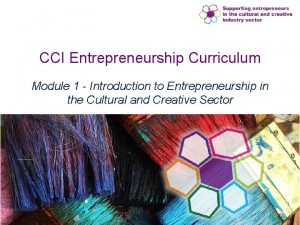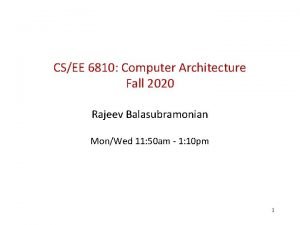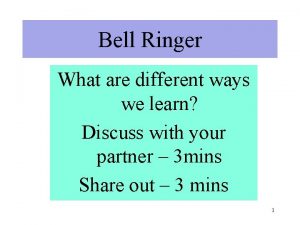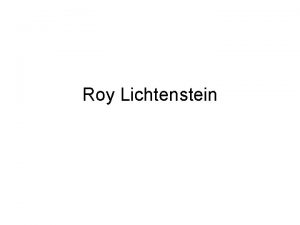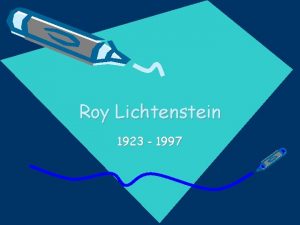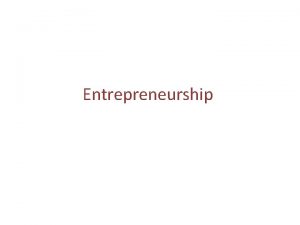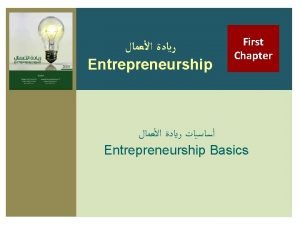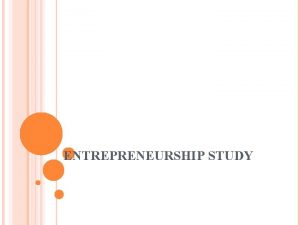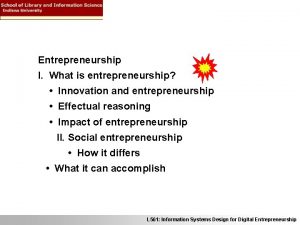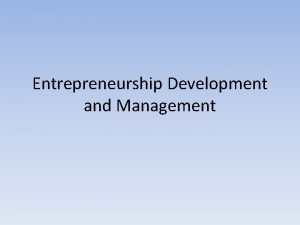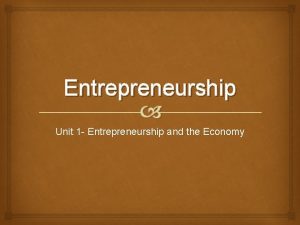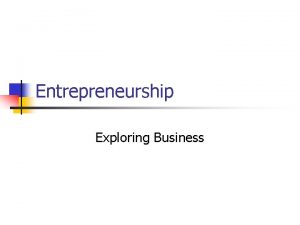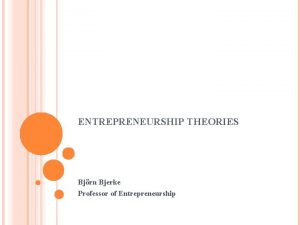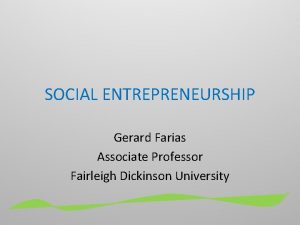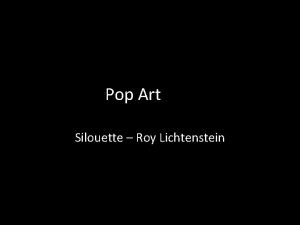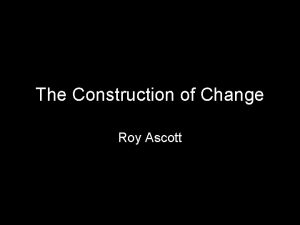Entrepreneurship 2 e Rajeev Roy Roy Associate Professor

























- Slides: 25

Entrepreneurship, 2 e Rajeev Roy, Roy Associate Professor, Xavier Institute of Management, Bhubaneshwar Entrepreneurship, 2 e © Oxford University Press 2011 All rights reserved

CHAPTER 9 BUSINESS MODELS Entrepreneurship, 2 e © Oxford University Press 2011 All rights reserved

Chapter Objectives • • To understand what is a business model To comprehend the history of the term To list the elements of a business model To understand how the elements fit together to create a business To learn to analyse a business using the business model canvas or the four box model To classify the various types of business models To get a broad understanding of contemporary business models To understand the importance of business model innovation Entrepreneurship, 2 e © Oxford University Press 2011 All rights reserved

Introduction • A business model describes the rationale of how an organization creates, delivers, and captures value. On the other hand, a business plan is how you execute the business model. If the business model does not work, the business is unlikely to do well. Entrepreneurship, 2 e © Oxford University Press 2011 All rights reserved

The Four-Box Business Model Entrepreneurship, 2 e © Oxford University Press 2011 All rights reserved

Customer Value Proposition The overall value of a CVP depends on these three key metrics: 1. How important the ‘job’ or the problem is to the customer 2. How satisfied are the customers with the current solutions 3. What is the relative advantage of the new offering, compared to the previous offerings Entrepreneurship, 2 e © Oxford University Press 2011 All rights reserved

Profit Formula • • Revenue model Cost structure Target unit margin Resource velocity Entrepreneurship, 2 e © Oxford University Press 2011 All rights reserved

Key Resources • • • People Technology Raw materials Equipment Information Channels Partnerships and alliances Funds Licenses or permits Entrepreneurship, 2 e © Oxford University Press 2011 All rights reserved

Key Processes • Business rules and success metrics • Behavioural norms Entrepreneurship, 2 e © Oxford University Press 2011 All rights reserved

Osterwalder’s Business Model Canvas Entrepreneurship, 2 e © Oxford University Press 2011 All rights reserved

How canvas differs from 4 -box • • • Introduction of ‘Strategic partnerships’ Splitting customers into: Customer segments Customer relationships Channels Costs and revenues are in different components Entrepreneurship, 2 e © Oxford University Press 2011 All rights reserved

Types of Business Models Currently Employed Entrepreneurship, 2 e © Oxford University Press 2011 All rights reserved

Niche • Compatibility of niche needs and product features • Size of niche • Willingness to pay • accessibility Entrepreneurship, 2 e © Oxford University Press 2011 All rights reserved

Long Tail • Make everything available • Have a low price • Help find products Entrepreneurship, 2 e © Oxford University Press 2011 All rights reserved

Mass Customisation • • Combines the low unit costs of mass production processes with the flexibility of individual customization Modularize products Delay assembly Use configurators to capture customer preferences Assemble and deliver Entrepreneurship, 2 e © Oxford University Press 2011 All rights reserved

Freemium • • • Feature limited Time Limited Capacity limited Seat limited Customer Class Limited Entrepreneurship, 2 e © Oxford University Press 2011 All rights reserved

Unbundling • Breakup a product into independent components • Strip away add-ons • Sell components as a complete product • Upsell add-ons • Increase in prices is possible Entrepreneurship, 2 e © Oxford University Press 2011 All rights reserved

Bundling • • • There are economies of scale in production, There are economies of scope in distribution, Marginal costs of bundling are low Production set-up costs are high, Customer acquisition costs are high. Consumers appreciate the resulting simplification Entrepreneurship, 2 e © Oxford University Press 2011 All rights reserved

No Frills • Low prices are driven by low costs • Rarely will small firms have lower costs than large firms • Decrease costs by removing ‘frills’ which are costly but are not valued much by customers Entrepreneurship, 2 e © Oxford University Press 2011 All rights reserved

Premium • Uber Premium • Mass Class Entrepreneurship, 2 e © Oxford University Press 2011 All rights reserved

Open Business Models • Open source software • Crowd sourcing – Crowd funding – Crowd creation – Crowd voting – Crowd wisdom Entrepreneurship, 2 e © Oxford University Press 2011 All rights reserved

• Problems can be explored at comparatively little cost, and often very quickly. • Payment is by results or even omitted • The entrepreneur can tap a wider range of talent • Entrepreneurs gain first-hand insight on their customers' desires. • The community may feel a brand-building kinship with the entrepreneur Entrepreneurship, 2 e © Oxford University Press 2011 All rights reserved

Multi-sided Platforms • The entrepreneur acts like a go-between • To be effective, a sufficiently large pool is needed on both sides. • A strong value proposition needs to be crafted for both sides • Usually there are high network effects Entrepreneurship, 2 e © Oxford University Press 2011 All rights reserved

Social Enterprises Working on business-minded solutions to social problems Vijay Mahajan – “Single goal optimization is a 20 th century anacronism” Entrepreneurship, 2 e © Oxford University Press 2011 All rights reserved

Business Innovation • • • There are five strategic circumstances that often need a change in business model: The opportunity to address the needs of a group of customers who have been shut of a market because existing solutions are too expensive or too complex to address their needs. There is a new promising technology and there is an opportunity to capitalize on it by using an innovative business model. The opportunity to bring a job-to-be-done focus in a market where it does not exist as yet. The need to counter low cost competitors. There is a need to respond to a shifting basis of competition. Entrepreneurship, 2 e © Oxford University Press 2011 All rights reserved
 Promotion from assistant to associate professor
Promotion from assistant to associate professor Introduction to entrepreneurship module
Introduction to entrepreneurship module Rajeev balasubramonian
Rajeev balasubramonian Rajeev raizada
Rajeev raizada Rajeev bapat
Rajeev bapat Land podi procedure
Land podi procedure Dr rajeev nagpal
Dr rajeev nagpal Rajeev jain md
Rajeev jain md Rajeev srivastava iit bhu
Rajeev srivastava iit bhu Rajeev bansal
Rajeev bansal Rajeev surati
Rajeev surati Rajeev balasubramonian
Rajeev balasubramonian Rajeev ram mit
Rajeev ram mit Rajeev sangal
Rajeev sangal What is the disadvantage of direct mapping
What is the disadvantage of direct mapping Name something you associate with superman
Name something you associate with superman To associate
To associate Associate degree rmit
Associate degree rmit Physician associate lecturer
Physician associate lecturer Inca civilization
Inca civilization Associate consultant in capgemini
Associate consultant in capgemini Memorandum meaning
Memorandum meaning Associate warden
Associate warden Harper college international students
Harper college international students Los angeles harbor college culinary arts
Los angeles harbor college culinary arts Pjas cern
Pjas cern

